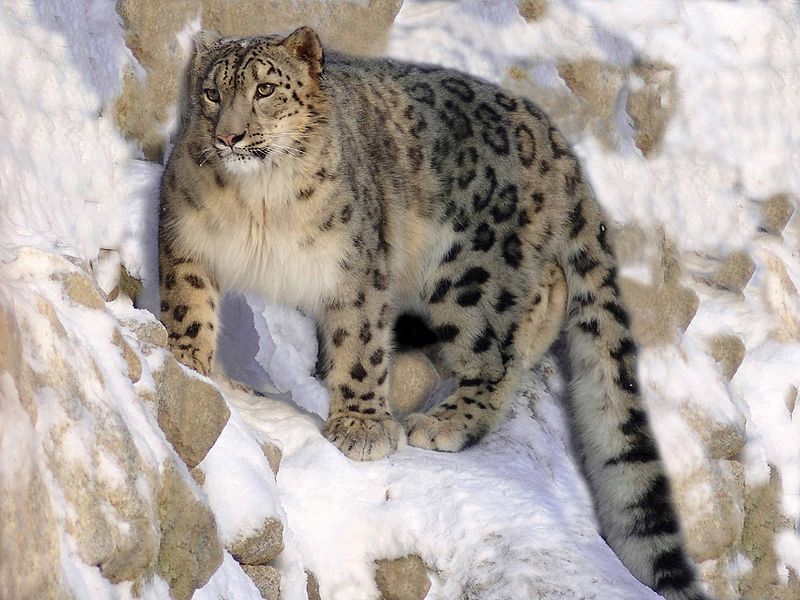
The Ghost of the Mountains: Unveiling the Enigmatic Snow Leopard
High in the rugged peaks of Central and South Asia, where snow-capped mountains brush the sky, lives a mesmerizing predator known as the snow leopard. With its thick fur the color of freshly fallen snow, spotted with rosettes like dark shadows, it seamlessly blends into its harsh, breathtaking environment. Elusive and solitary, the snow leopard has earned the nickname “the ghost of the mountains” for its ability to navigate its rocky domain unseen and unheard. But this magnificent creature faces numerous challenges, making understanding and protecting it more crucial than ever.
Here’s a glimpse into the intriguing world of the snow leopard:
- Masters of Adaptation: Their thick fur, wide paws, and robust tails equip them to withstand frigid temperatures and treacherous terrain. They can leap incredible distances over rocky slopes, stalk prey silently through deep snow, and even descend cliffs headfirst using their remarkable flexibility.
- Solitary Hunters: Snow leopards are primarily solitary hunters, relying on stealth and agility to take down prey like wild sheep, goats, and marmots. Their powerful jaws and sharp claws ensure a swift and successful hunt.
- Family Life: Despite their solitary nature, females raise their young for up to two years, teaching them hunting skills and survival tactics. Playful cubs add a touch of warmth to these enigmatic creatures’ life cycle.
Threats to the snow leopard:
- Habitat Loss: Unfortunately, the snow leopard’s mountain home is shrinking due to factors like climate change and infrastructure development, reducing their hunting grounds and isolating populations.
- Poaching: Their beautiful fur and body parts are illegally traded, putting them at risk from poachers despite strict laws.
- Human-Wildlife Conflict: Competition for resources and livestock predation can sometimes lead to conflict with local communities, adding another layer of complexity to their conservation.
Hope for the future:
- Dedicated Conservation Efforts: Organizations like the Snow Leopard Trust and World Wildlife Fund work tirelessly to protect these magnificent cats, studying their populations, advocating for habitat preservation, and promoting alternative livelihoods for local communities.
- Community Engagement: Engaging communities residing in snow leopard habitats and raising awareness about their importance is crucial for their long-term survival.
- Ecotourism: Responsible tourism, where visitors contribute to conservation efforts, can offer economic incentives for protecting these iconic predators.
Learn More and Get Involved:
- Snow Leopard Trust
- World Wildlife Fund | Snow Leopards
- Vanishing Tracks: Four Years Among the Snow Leopards of Nepal
By understanding the challenges they face and supporting conservation efforts, we can ensure that the “ghost of the mountains” continues to silently stalk its snowy domain for generations to come.






